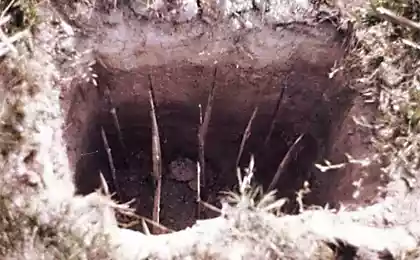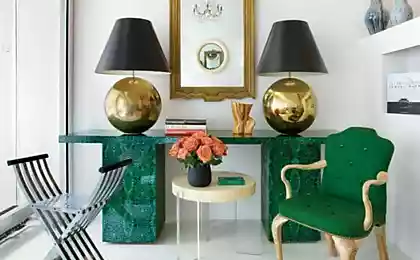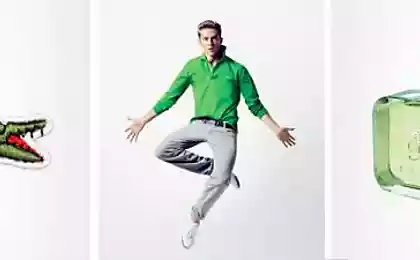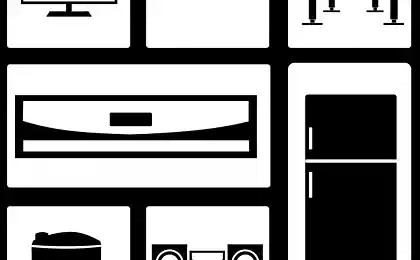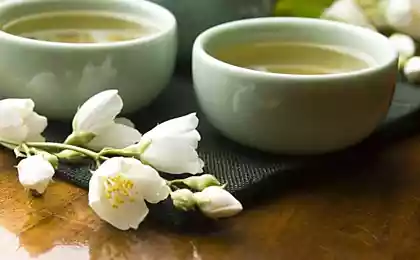743
How not to fall into the trap of "Smart city"
Thirty five million seven hundred forty three thousand eight hundred five
In 2013, the American urban planner and specialist in information architecture, Adam Greenfield published a book "Against the Smart city" (Against the Smart City). Greenfield criticized the fashionable idea that, as he wrote, "for all frequency remains woefully poor on details. Anyone who tries to understand what lies behind it, faced with a shortage of objective information. Mainly, there are only press releases of corporations and laudatory blogs".
If you're smart, show me your city
Irritation of Greenfield explained. Can't find modern high-tech company, which would not have boasted of their achievements in the field of "smart cities". French electrical engineering giant Schneider Electric in 2013, claimed that thanks to his projects, "wiser" more than 200 cities, including more than one hundred in America and about forty in Europe. A world leader in networking Cisco Systems announces participation in more than 90 projects of "smart city" of a different depth and complexity – with geography from Copenhagen to Kigali (Rwanda) and from Toronto to Kazan and Bangalore (India). Microsoft, IBM, Japan's NEC and Panasonic, Samsung, Siemens, they all, each in their own way and with their own products and technologies, announces the development of projects "smart cities".
In March 2015, your view of the problem and promises to introduce Moscow to Microsoft. And in November last year at the next conference, Cisco Connect 2014, part of which was also devoted to the theme of "smart cities", we talked about it with Matthew Smith (Matthew Smith): Director of strategy unit, Cisco Systems to develop industry solutions for emerging markets.
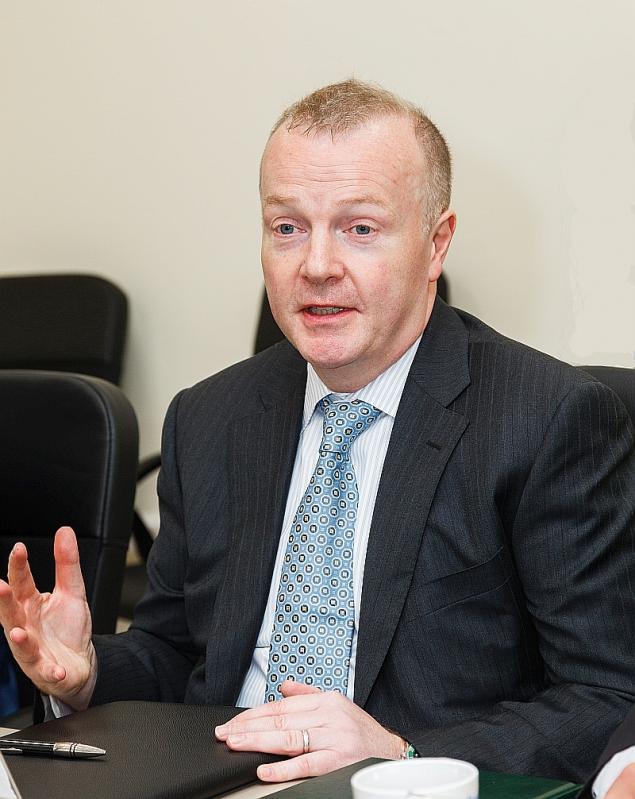
Team Matthew Smith is responsible for the strategy of bringing to market technologies Cisco the Internet of everything, and for the development of solutions contributing to the transformation of developing economies. His leadership qualities emerged in the years of service in the Royal Navy of great Britain, inspector of Hong Kong police and a financial Manager.
He calls himself an optimist and believes that the model "smart city" there is no alternative. However, among ninety of these cities none of which could be judged as something completed. Even the most advanced, like Barcelona or Copenhagen, yet more like a lab or landfills, where it continues work on individual fragments of something that may, under certain conditions, and sufficient investment will turn into a global product.
For example, Barcelona: it was one of the first cities of Europe, which introduced the virtual public services. Here, the system of management of water supply allows to save annually up to $ 60 million. "Smart" Parking eliminates the hassle of circling in search of free space. Smart street lighting saves energy and reduces costs from the city budget for 37 million dollars.
Smart garbage containers misleading themselves when it's time to take out. In Copenhagen and surrounding municipalities, Albertslund and Frederikssund together with Cisco, are working to unite as one entire city infrastructure, from lighting and Parking to energy grids and objects of civil purpose. Government of Copenhagen announced the intention to completely get rid of carbon dioxide emissions by 2025. And in the city of Wynne (40 km from the centre of Copenhagen in the municipality of Frederikssund) developed one of the most environmental and innovation in Europe, General plans of development with zero carbon dioxide emissions.
Smart means green
According to Matthew Smith, the smart city is inevitable will be environmentally sustainable. The same view is held, for example, and Dr. Boyd Cohen (Boyd Cohen) who teach courses on entrepreneurship, sustainability and "smart cities" at the University of development (Universidad del Desarrollo) in Santiago, Chile. This city proves Smith is not consumed by wasting energy on lighting and heating. System smart Parking here reduces vehicle emissions: up to a third of traffic in cities, he says, create a car, looking for somewhere to Park. The sensors will alert utilities about the problems in a water or gas network, when they still brewing, reducing leakage. Finally, the system traffic management smart cities will not only create a "green wave" for "ambulance cars", but will give to the hospital all the data on the patient before it arrives, saving time and saving lives.
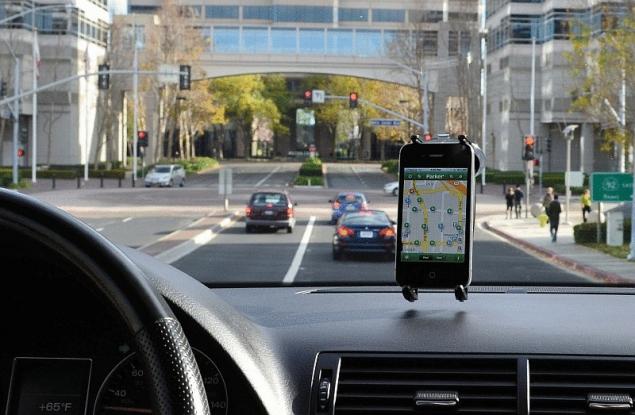
Deployed in downtown San Carlos (CA), a complex network of Cisco Wi-Fi together with smart Parking meters. Drivers are to obtain information about available Parking spaces via smartphone through a web site Parker that saved them from having to go places at random.
Cell link "smart city" can be considered "smart house". "Our smart campus in the Indian city of Bengaluru, our mini-city with an area of 200 thousand square meters, – said Matthew – now a 20% overlap criteria for the level of LEED platinum, and we have only just begun...". "Smart city" will, at last, and is much more resistant to shock element. For example, in Rio de Janeiro has a system alert smartphone owners of impending storms and hurricanes, especially residents of favelas. And early warning system on earthquakes in Japan itself stops high-speed trains for 10-15 seconds to push, thereby preventing possible accident...

The project "smart bus" in Barcelona is the bus shelters, which every 30 seconds report time before the next flight and problems on the route. Information duplicated voice for the blind. The pavilions also provide information about the surrounding area.
We must admit that the draw of Matthew Smith and other enthusiasts the concept of global smart city extremely attractive and alluring. So you want to live in a house where the fridge controls supplies of milk and cheese and is reported to the supermarket that it is time to replenish and a supermarket is calling you to come and pick up the generated order. At the same time information about your nutrition will go to your therapist and your insurance company, and if your diet meets the requirements of the doctor you regularly visit the fitness center, the company will give a discount on your next insurance...
Yes, it is tempting. However, the rights and Adam Greenfield. Everything is festive, bright side, has the reverse, darker and usually about it if they say anything casually and reluctantly.
Too many promises
The first thing you notice is that all current models of the growth of "smart cities" is a maximum of only 10% execution and 90% of promises. In the same Barcelona really smart technologies covered only a relatively small part of the territory. A lot of talk about the "smart Parking" in the French nice: but covered the sensor part of the Boulevard Victor Hugo is only a few hundred metres in the centre of the city. Of course, where we should start. But everyone knows that the longer the path, the more it can trap dangers and difficulties.
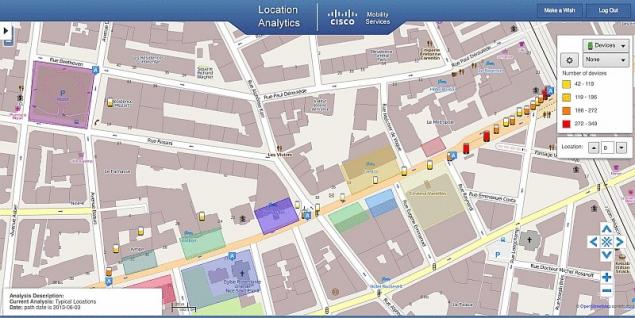
The idea to create a nice "connected Boulevard," was born from the decision to replace outdated Parking meters. On the Boulevard Victor Hugo has installed 200 sensors that transmit information about Parking spaces, traffic flows, street lighting, garbage collection and air quality.
The model of "smart cities" all the dangers and difficulties mainly divided into three groups. First, of course, is money. Investment. For example, a well-known figure: smart lighting provides savings in the cost of electricity by 20-25%. However, the business plan of the transition to "smart" lighting cannot operate the only measure of the cost of the many. In Russia, many of the city and region ("Green City" repeatedly reported about that) now go to street lighting with LEDs – in terms of the same data. While capital costs are relatively small in comparison with the cost of "smart lighting" after weighing all the "pros" and "cons", it is impossible to assert that the technology of "smart lighting" definitely puts the usual led lighting on the blades. At least for this data.
In one of his studies Cisco Systems says that in the next ten years, "smart house" will allow 100 billion to reduce operating costs by reducing energy consumption through the integration of heating, ventilation and air conditioning system with other systems; monitoring of gas supply will bring 69 billion. by reducing the cost of meter reading and improve accuracy of data; what "smart Parking" will bring 41 billion. due to the operational accounting of available Parking spaces in the city; that the management of the water supply will bring 39 billion. by connecting household water meters to an IP network to remote meter reading for water consumption and so on... it's just that gas meters first, still have to fabricate and install, and integrated HVAC system also needs somewhere to materialize.
Where to get the money?
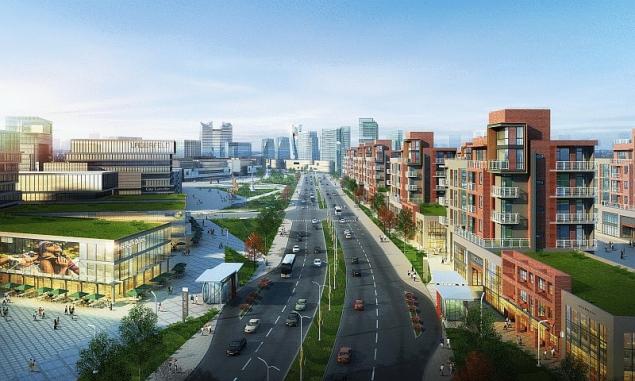
The project "Smart and safe Kazan city" should not be confused with the project "SMART city Kazan": educational and innovation center, which replaced the failed Expo 2020.
The project "Smart and safe Kazan city" is the brainchild of Cisco Systems, Tatarstan government and municipal authorities of Kazan, according to official materials, is sustainable, and is part of private investment and public-private partnerships. It needs to reduce costs in the housing sector by 80%, the cost of lighting the city by 40%, reduce the number of traffic jams by a quarter. In addition, Kazan will be safer, 50% will increase the efficiency of use of public transport. The creation of infrastructure borne by private investors, and the city will use it on a reimbursable basis. Initial financial calculations, the payback period is less than four years. The internal rate of return exceeds 25%, the net present value of public or private investor in the calculation of the 5 years will be 50 million U.S. dollars (calculations were made before the economic crisis in Russia before the devaluation of the ruble).
The project provides for integrated urban Wi-Fi network and video surveillance, intelligent transport system, monitoring the urban environment and the ecological environment, smart Parking, smart bus, smart street lighting, contextual advertising, smart utilities.
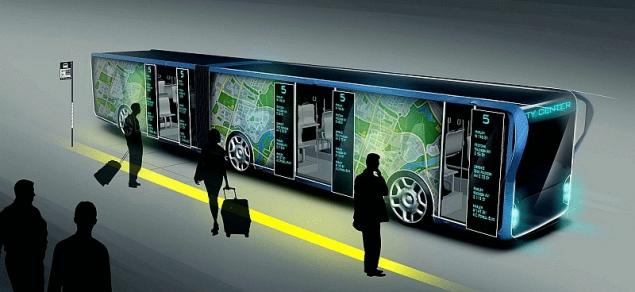
Kazan "smart bus" offered to equip a high-speed network access and video cameras to monitor road and traffic violations. The side of the bus – a large LED display, which can display anything from a map of the route before advertising. Developed by the Kazan IT-specialists.
Frequent repetition of the word "smart", however, does not mean anything. Realized for now we have in a small part of the city system of Video Surveillance Manager, Cisco Systems, and intelligent transport system: a set of sensors of traffic flows, the center and controlled the traffic lights. Actually, there is nothing wrong; they are very useful: write that on 1 September 2014 (one of the expected days peak roads) tubes in difficult areas of the Kazan streets have been reduced to 10-15 minutes vs the usual 20 or 30. But in Moscow, for example, intelligent transport system 1700 includes traffic signals, 2048 cameras 6741 detector traffic, 700 km of fiber-optic communication lines, 143 scoreboard display, 4000 videodetection, 800 photo and video, data network, and finally a Single city dispatch center (data mid-2014). Add to that 20 thousand of house surveillance cameras and thousands of cameras on the object: say, the average Muscovite enters the field of view of 24 CCTV cameras per day – about any payback of these systems in a purely commercial sense, simply can not be considered. But for some reason this part of the system "smart city" is evolving faster than others and clearly ahead.
The technology of the future
The next problem is technical, rather technical and environmental-in-one.
The Foundation of any smart city system of sensors, data channels and their processing centers (data centers). In 2012, the market has put 2 billion sensors APCS. In 2013 8 billion pieces. In 2014 the 24 billion pieces. According to the forecast of Cisco Systems, in 2015 the number of Internet-connected mobile devices and smartphones will exceed the population of our planet, and in 2020 to the global web will be 50 billion connected objects: not only the usual tablets, but also a variety of devices that can receive and transmit information. So soon the expense of the number of different ACS sensors and access points – first of all, Wi-Fi networks – will go to the hundreds of billions.
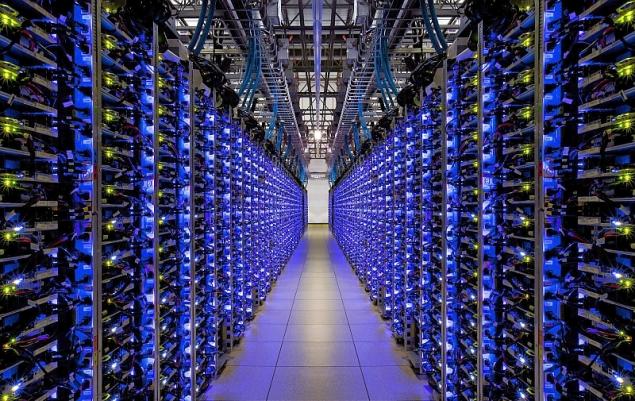
New data centers opened in different countries without stopping, and continues to be missing. What happens if the demand for them will increase dramatically?
Since the bandwidth of Wi-Fi channel is divided by the number of subscribers, the channels just will not sustain the explosive growth of the data stream. Research firm Gartner warned in March 2014 that the architecture of the existing data centers and their channels is rooted in the philosophy of the relatively slow exchange of large packets of data between people and applications. New Internet – "the Internet of everything," or IoE as it is called, is dramatically changing the requirements for bandwidth capabilities of data centers and their channels. But it's not about the channels, although they have to be created at a faster pace (and it investment): authentication and encryption of the set of transmitted "one-bit" of information packets. Today's remedies are not willing to authenticate at the same time tens of thousands of sensors ACS in terms of a cascading failure, is not ready to manage certificates and keys with a huge number of small concurrent requests. Thousands of 12 bits from the ACS плюс160 bit electronic signature, DSA, or 256 bits of encryption according to GOST 28147-89 is a natural DDOS attack can paralyze the "smart city" with all its "smart" garbage cans and "smart" buses.
However, the exponential growth of electronic peripherals is another side: disposal.
Attack of the garbage
Western countries have developed draconian rules of e-waste on its territory: that is denoted as e-waste. Therefore, disposal of this often very unsafe garbage emigrated. According to rough estimates, 5% of the world's e-waste is processed in Brazil, India and Indonesia at 7.5% in Nigeria and Ghana. The remaining 70% is sent for processing in China town Guiyu (Guiyu) in Shantou district of Guangdong province.
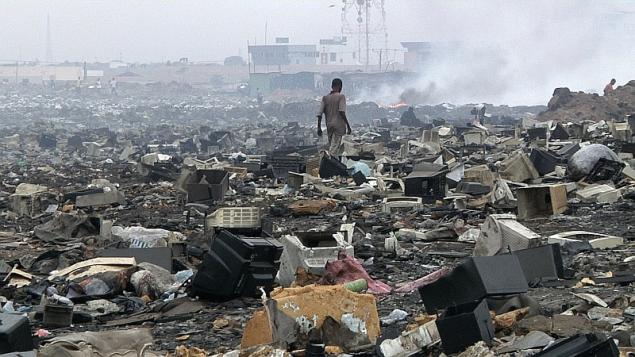
Wetlands Agbogbloshie near Accra, Ghana's capital. Hovering around the rivers that flow into the Atlantic ocean. The inhabitants Agbogbloshie smelted from e-waste for rare metals, copper and aluminum: because in Agbogbloshie constantly burning fires, releasing large amounts of lead, mercury, arsenic, cadmium.
Agbogbloshie – a suburb of Accra, the capital of the African Ghana. According for 2014 – the largest and the most terrible industrial landfill, recycling center e-waste, shaped environmental hell on Earth, providing jobs to about 40 thousands of local residents. Chinese Guyu often called "the world capital of e-waste". 150 thousand people for 16 hours a day in unsanitary conditions are sorted, dismantled and recycled piles of garbage, containing not only silver and gold, but also cadmium, lead, formaldehyde, and other toxic components. Send to the underworld – though smuggling e-waste more profitable than to destroy it in Holland or England. The explosive growth in the number of various electronic sensors and devices are likely to welcome because it means additional income for their destruction. Also a kind of form of redistribution of wealth on the planet... although some are not sustainable.

70% of the world's e-waste sent for recycling in the Chinese Guyy. Adults and children work without days off, manually dismantling the electronic device and extracting from them the metals. Everything else is thrown into the local river or burned.
Bettina, Tratz-Ryan (Bettina Tratz-Ryan), Vice-President for science and specialist in green information technology at Gartner, says: "According to our calculations, in 2020, 26 billion of various electronic sensors and devices are subject to liquidation. Where they go from the trash? To date there is no technology that enables 100% recycling. Something still remains. Where? At the dump?"
The UN University (United Nations University) has estimated that in 2013, 53 million tons of e-waste went in the trash, but approximately 67 million tons of electronics have come to replace them. And according to forecasts, in 2017 the volume of e-waste will increase to 65.4 million tons.
But that's not all.
Internet vulnerabilities
The amount of data over networks doubles every two years. The total amount of digital information created by humanity in 2006 was 0.16 zettabytes. And according to the forecast IDC, by 2020 it will reach 44 zettabytes per year. And this despite the fact that, according to some estimates, 99.4% of physical objects that will ever go on the Internet until the network is not connected. At the international exhibition of consumer electronics CES 2014 Cisco Systems has announced that the economic potential of connecting the unconnected is estimated at 19 trillion. dollars, with 4.6 trillion. dollars in the public sector. There is something come to the excitement.
However, worried not only there.
In 2014, the bestseller has become a computer game Watch Dogs, main character Aiden Pearce, a brilliant hacker. His motto – "Everything Is Connected", it's an instrument – a super-smartphone, with which it snaps a network of "smart city" of Chicago as nuts: creates chaos on smart streets that intercepts messages and listening to conversations, and so on. There are no data that it would extract and use to its use.
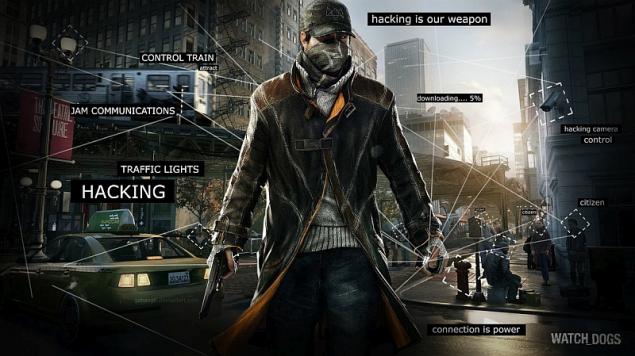
Aiden pierce are extremely good hacker, maniac, the monitoring, protection and manipulation. With the help of a special gadget, Profiler, he can access the Central operating system of Chicago and hack into everything from traffic lights, sewage and telephone network to trains' transformers and drawbridges.
Do not think that this is just a game. The hacking of websites or penetration into the Holy of holies banks today no one is hit (remember the scandal with Sony Pictures). But most alarming of all – the prospects.
Experts of Symantec believe that in 2014, the IoE became what they called the "Internet of vulnerabilities" (Internet of Vulnerabilities). The company recklessly create a "smart" device with access to the Internet, not realizing the dangers in the field of information security. These devices are not only vulnerable to attack, but do not have the mechanisms of alert in case of attack. "Smart home" filled with dozens of different devices: water pumps and elevators, electricity and gas, ventilation and sanitation. Their work is controlled by a single Protocol but reliable vulnerability of these hundreds of devices of different manufacturers, builders and installers are unknown, which creates an unsafe sleeping risk across the city.
Symantec warns that the problem "Internet of vulnerabilities" especially true of energy supply, where a growing number of smart energy systems (smart grid). Such vulnerabilities are a threat to the "smart cities", as to the operation of the smart grid system must have a single IT infrastructure with sensitive data of citizens.
The hole in the toaster
In July 2014, experts from HP's Fortify division of HP, working on network security issues and published the results of their research. They counted 250 with extra "holes" in software the most common household devices, and many of these vulnerabilities are very serious, like the Heartbleed virus, attacks such as "denial of service" (DOS) or cross-site scripting (when issued by a web-based system page embedded malicious code that will be executed on the user's computer when opening this page).

The simplest household appliances, invisible and familiar, suddenly turns dangerous traitors: the story of Stephen king.
HP Fortify have to study quite innocent and common smart home gadgets-webcam, thermostats, controllers, garden sprinklers, home alarms or controllers open the garage door. On average, each of the 10 tested devices had 25 holes, some of them so serious they could easily access the attacker access to personal data owners. And just recently – in November 2014, registered in Russia web site has opened access to the streaming video from thousands of private Webcams around the world, including a camera stationed in children's rooms and in hospital wards. The owners of the site claimed to have pursued a noble aim: to draw public attention to the subject of personal security in the network, which is often the fault of carelessness of users and the negligence of equipment manufacturers (in this case, the Chinese company Foscam, Panasonic and Linksys).
Deadly game
But the Bank account and even intimate photos is not the limit.
One Jack Barnaby (he died suddenly on 25 July 2013 at the age of 35 years) was a specialist on computer security firm McAfee, and then became Director of security of embedded devices in the company IOActive with offices in Seattle and London.
He became known in 2010, at the Black Hat making the report about the vulnerability of ATMs and their software. But the real atomic bomb was his discovery in 2011, when he showed that an insulin pump for diabetes diabetes can be managed remotely. With 90 meters via the Internet to get the pump to dump its contents into the pancreas and cause sudden death of the patient. In 2012 Jack demonstrated the ability to remotely control implanted pacemaker. He found that from a distance of 9-15 meters can obtain a remote access to these devices, such as a tablet, take all the information about the patient and the device and optionally stop the pacemaker. A perfect murder online? Or just a story?
Calculated risk
Director of strategy division of Cisco Systems on the development of industry-specific solutions for emerging markets Matt Smith wouldn't be in his position if I had not been aware of these problems better than me. He readily agrees that security in the smart world becomes the number one priority: "the decision of the security tasks will be thrown our and our partners' core resources. This is not a problem of individual supermarket, we treat this as a global problem". But he is still optimistic. All personal data, he said, already exist separately. Merit network, only that it brings them together. This explains the main risk and the main danger. But the danger is always there. "Even if you will create the safest airplane in the world – the planes still sometimes suffer disaster. Number of accidents in the world decreases, although the weight of each increases... In 2007, there were 3,000 applications for the network. Today, their written 2.5 million. This makes the system stronger and safer. But we can only move in the direction of minimise the risk, although it will never be zero," he says.
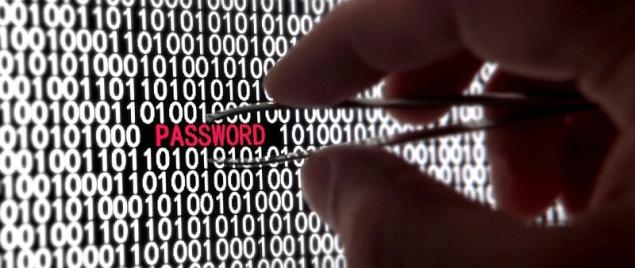
Absolutely secure systems in engineering does not happen. The question of cost of security measures and degree of risk, which are ready to accept the society in exchange for the benefits and advantages of "smart world".
I. Ilf and E. Petrov "the Notebook" once remarked:"Before, in fiction, the main thing was radio. It was expected the happiness of mankind. But the radio is there but there is no happiness".
The biggest danger associated with the idea of "smart cities" and even "smart world", lies in the introduction of her excessive emotions: how excitable, like expectations of "happiness of mankind" and the solution to all his problems, and the grim apocalyptic. In fact, no one knows what will become smart cities by IoE in 20-30 years, and what new, unknown problems will have to decide then.
Apparently, Matt Smith is right that, historically, "smart cities," there is no alternative. The already mentioned Dr. Boyd Cohen actually believes that green capitalism is archivehome, and therefore inevitable: in 2011, he even wrote a book Climate Capitalism: Capitalism in the Age of Climate Change co-authored with hunter Lovins (Hunter Lovins), where proves that a green market economy with a bright future, and as in any market, cream in the form of additional profits here will remove the one who gets up early. He sees a smart city not as a zone of high mass domestic comfort, but as incubators or clusters of new green technologies, green construction, all green innovation. That's why the city, spearheaded by the energetic and far-sighted administrators who so recklessly involved in this race. They want to be the first to get the maximum benefits. The mayor of Barcelona Xavier Trias formulates this as follows: "Being smart means always finding the best way to achieve the goal. Our main goal is to create a new urban model for the XXI century, in which economic and social development are inextricably linked".
Source: green-city.su/
In 2013, the American urban planner and specialist in information architecture, Adam Greenfield published a book "Against the Smart city" (Against the Smart City). Greenfield criticized the fashionable idea that, as he wrote, "for all frequency remains woefully poor on details. Anyone who tries to understand what lies behind it, faced with a shortage of objective information. Mainly, there are only press releases of corporations and laudatory blogs".
If you're smart, show me your city
Irritation of Greenfield explained. Can't find modern high-tech company, which would not have boasted of their achievements in the field of "smart cities". French electrical engineering giant Schneider Electric in 2013, claimed that thanks to his projects, "wiser" more than 200 cities, including more than one hundred in America and about forty in Europe. A world leader in networking Cisco Systems announces participation in more than 90 projects of "smart city" of a different depth and complexity – with geography from Copenhagen to Kigali (Rwanda) and from Toronto to Kazan and Bangalore (India). Microsoft, IBM, Japan's NEC and Panasonic, Samsung, Siemens, they all, each in their own way and with their own products and technologies, announces the development of projects "smart cities".
In March 2015, your view of the problem and promises to introduce Moscow to Microsoft. And in November last year at the next conference, Cisco Connect 2014, part of which was also devoted to the theme of "smart cities", we talked about it with Matthew Smith (Matthew Smith): Director of strategy unit, Cisco Systems to develop industry solutions for emerging markets.

Team Matthew Smith is responsible for the strategy of bringing to market technologies Cisco the Internet of everything, and for the development of solutions contributing to the transformation of developing economies. His leadership qualities emerged in the years of service in the Royal Navy of great Britain, inspector of Hong Kong police and a financial Manager.
He calls himself an optimist and believes that the model "smart city" there is no alternative. However, among ninety of these cities none of which could be judged as something completed. Even the most advanced, like Barcelona or Copenhagen, yet more like a lab or landfills, where it continues work on individual fragments of something that may, under certain conditions, and sufficient investment will turn into a global product.
For example, Barcelona: it was one of the first cities of Europe, which introduced the virtual public services. Here, the system of management of water supply allows to save annually up to $ 60 million. "Smart" Parking eliminates the hassle of circling in search of free space. Smart street lighting saves energy and reduces costs from the city budget for 37 million dollars.
Smart garbage containers misleading themselves when it's time to take out. In Copenhagen and surrounding municipalities, Albertslund and Frederikssund together with Cisco, are working to unite as one entire city infrastructure, from lighting and Parking to energy grids and objects of civil purpose. Government of Copenhagen announced the intention to completely get rid of carbon dioxide emissions by 2025. And in the city of Wynne (40 km from the centre of Copenhagen in the municipality of Frederikssund) developed one of the most environmental and innovation in Europe, General plans of development with zero carbon dioxide emissions.
Smart means green
According to Matthew Smith, the smart city is inevitable will be environmentally sustainable. The same view is held, for example, and Dr. Boyd Cohen (Boyd Cohen) who teach courses on entrepreneurship, sustainability and "smart cities" at the University of development (Universidad del Desarrollo) in Santiago, Chile. This city proves Smith is not consumed by wasting energy on lighting and heating. System smart Parking here reduces vehicle emissions: up to a third of traffic in cities, he says, create a car, looking for somewhere to Park. The sensors will alert utilities about the problems in a water or gas network, when they still brewing, reducing leakage. Finally, the system traffic management smart cities will not only create a "green wave" for "ambulance cars", but will give to the hospital all the data on the patient before it arrives, saving time and saving lives.

Deployed in downtown San Carlos (CA), a complex network of Cisco Wi-Fi together with smart Parking meters. Drivers are to obtain information about available Parking spaces via smartphone through a web site Parker that saved them from having to go places at random.
Cell link "smart city" can be considered "smart house". "Our smart campus in the Indian city of Bengaluru, our mini-city with an area of 200 thousand square meters, – said Matthew – now a 20% overlap criteria for the level of LEED platinum, and we have only just begun...". "Smart city" will, at last, and is much more resistant to shock element. For example, in Rio de Janeiro has a system alert smartphone owners of impending storms and hurricanes, especially residents of favelas. And early warning system on earthquakes in Japan itself stops high-speed trains for 10-15 seconds to push, thereby preventing possible accident...

The project "smart bus" in Barcelona is the bus shelters, which every 30 seconds report time before the next flight and problems on the route. Information duplicated voice for the blind. The pavilions also provide information about the surrounding area.
We must admit that the draw of Matthew Smith and other enthusiasts the concept of global smart city extremely attractive and alluring. So you want to live in a house where the fridge controls supplies of milk and cheese and is reported to the supermarket that it is time to replenish and a supermarket is calling you to come and pick up the generated order. At the same time information about your nutrition will go to your therapist and your insurance company, and if your diet meets the requirements of the doctor you regularly visit the fitness center, the company will give a discount on your next insurance...
Yes, it is tempting. However, the rights and Adam Greenfield. Everything is festive, bright side, has the reverse, darker and usually about it if they say anything casually and reluctantly.
Too many promises
The first thing you notice is that all current models of the growth of "smart cities" is a maximum of only 10% execution and 90% of promises. In the same Barcelona really smart technologies covered only a relatively small part of the territory. A lot of talk about the "smart Parking" in the French nice: but covered the sensor part of the Boulevard Victor Hugo is only a few hundred metres in the centre of the city. Of course, where we should start. But everyone knows that the longer the path, the more it can trap dangers and difficulties.

The idea to create a nice "connected Boulevard," was born from the decision to replace outdated Parking meters. On the Boulevard Victor Hugo has installed 200 sensors that transmit information about Parking spaces, traffic flows, street lighting, garbage collection and air quality.
The model of "smart cities" all the dangers and difficulties mainly divided into three groups. First, of course, is money. Investment. For example, a well-known figure: smart lighting provides savings in the cost of electricity by 20-25%. However, the business plan of the transition to "smart" lighting cannot operate the only measure of the cost of the many. In Russia, many of the city and region ("Green City" repeatedly reported about that) now go to street lighting with LEDs – in terms of the same data. While capital costs are relatively small in comparison with the cost of "smart lighting" after weighing all the "pros" and "cons", it is impossible to assert that the technology of "smart lighting" definitely puts the usual led lighting on the blades. At least for this data.
In one of his studies Cisco Systems says that in the next ten years, "smart house" will allow 100 billion to reduce operating costs by reducing energy consumption through the integration of heating, ventilation and air conditioning system with other systems; monitoring of gas supply will bring 69 billion. by reducing the cost of meter reading and improve accuracy of data; what "smart Parking" will bring 41 billion. due to the operational accounting of available Parking spaces in the city; that the management of the water supply will bring 39 billion. by connecting household water meters to an IP network to remote meter reading for water consumption and so on... it's just that gas meters first, still have to fabricate and install, and integrated HVAC system also needs somewhere to materialize.
Where to get the money?

The project "Smart and safe Kazan city" should not be confused with the project "SMART city Kazan": educational and innovation center, which replaced the failed Expo 2020.
The project "Smart and safe Kazan city" is the brainchild of Cisco Systems, Tatarstan government and municipal authorities of Kazan, according to official materials, is sustainable, and is part of private investment and public-private partnerships. It needs to reduce costs in the housing sector by 80%, the cost of lighting the city by 40%, reduce the number of traffic jams by a quarter. In addition, Kazan will be safer, 50% will increase the efficiency of use of public transport. The creation of infrastructure borne by private investors, and the city will use it on a reimbursable basis. Initial financial calculations, the payback period is less than four years. The internal rate of return exceeds 25%, the net present value of public or private investor in the calculation of the 5 years will be 50 million U.S. dollars (calculations were made before the economic crisis in Russia before the devaluation of the ruble).
The project provides for integrated urban Wi-Fi network and video surveillance, intelligent transport system, monitoring the urban environment and the ecological environment, smart Parking, smart bus, smart street lighting, contextual advertising, smart utilities.

Kazan "smart bus" offered to equip a high-speed network access and video cameras to monitor road and traffic violations. The side of the bus – a large LED display, which can display anything from a map of the route before advertising. Developed by the Kazan IT-specialists.
Frequent repetition of the word "smart", however, does not mean anything. Realized for now we have in a small part of the city system of Video Surveillance Manager, Cisco Systems, and intelligent transport system: a set of sensors of traffic flows, the center and controlled the traffic lights. Actually, there is nothing wrong; they are very useful: write that on 1 September 2014 (one of the expected days peak roads) tubes in difficult areas of the Kazan streets have been reduced to 10-15 minutes vs the usual 20 or 30. But in Moscow, for example, intelligent transport system 1700 includes traffic signals, 2048 cameras 6741 detector traffic, 700 km of fiber-optic communication lines, 143 scoreboard display, 4000 videodetection, 800 photo and video, data network, and finally a Single city dispatch center (data mid-2014). Add to that 20 thousand of house surveillance cameras and thousands of cameras on the object: say, the average Muscovite enters the field of view of 24 CCTV cameras per day – about any payback of these systems in a purely commercial sense, simply can not be considered. But for some reason this part of the system "smart city" is evolving faster than others and clearly ahead.
The technology of the future
The next problem is technical, rather technical and environmental-in-one.
The Foundation of any smart city system of sensors, data channels and their processing centers (data centers). In 2012, the market has put 2 billion sensors APCS. In 2013 8 billion pieces. In 2014 the 24 billion pieces. According to the forecast of Cisco Systems, in 2015 the number of Internet-connected mobile devices and smartphones will exceed the population of our planet, and in 2020 to the global web will be 50 billion connected objects: not only the usual tablets, but also a variety of devices that can receive and transmit information. So soon the expense of the number of different ACS sensors and access points – first of all, Wi-Fi networks – will go to the hundreds of billions.

New data centers opened in different countries without stopping, and continues to be missing. What happens if the demand for them will increase dramatically?
Since the bandwidth of Wi-Fi channel is divided by the number of subscribers, the channels just will not sustain the explosive growth of the data stream. Research firm Gartner warned in March 2014 that the architecture of the existing data centers and their channels is rooted in the philosophy of the relatively slow exchange of large packets of data between people and applications. New Internet – "the Internet of everything," or IoE as it is called, is dramatically changing the requirements for bandwidth capabilities of data centers and their channels. But it's not about the channels, although they have to be created at a faster pace (and it investment): authentication and encryption of the set of transmitted "one-bit" of information packets. Today's remedies are not willing to authenticate at the same time tens of thousands of sensors ACS in terms of a cascading failure, is not ready to manage certificates and keys with a huge number of small concurrent requests. Thousands of 12 bits from the ACS плюс160 bit electronic signature, DSA, or 256 bits of encryption according to GOST 28147-89 is a natural DDOS attack can paralyze the "smart city" with all its "smart" garbage cans and "smart" buses.
However, the exponential growth of electronic peripherals is another side: disposal.
Attack of the garbage
Western countries have developed draconian rules of e-waste on its territory: that is denoted as e-waste. Therefore, disposal of this often very unsafe garbage emigrated. According to rough estimates, 5% of the world's e-waste is processed in Brazil, India and Indonesia at 7.5% in Nigeria and Ghana. The remaining 70% is sent for processing in China town Guiyu (Guiyu) in Shantou district of Guangdong province.

Wetlands Agbogbloshie near Accra, Ghana's capital. Hovering around the rivers that flow into the Atlantic ocean. The inhabitants Agbogbloshie smelted from e-waste for rare metals, copper and aluminum: because in Agbogbloshie constantly burning fires, releasing large amounts of lead, mercury, arsenic, cadmium.
Agbogbloshie – a suburb of Accra, the capital of the African Ghana. According for 2014 – the largest and the most terrible industrial landfill, recycling center e-waste, shaped environmental hell on Earth, providing jobs to about 40 thousands of local residents. Chinese Guyu often called "the world capital of e-waste". 150 thousand people for 16 hours a day in unsanitary conditions are sorted, dismantled and recycled piles of garbage, containing not only silver and gold, but also cadmium, lead, formaldehyde, and other toxic components. Send to the underworld – though smuggling e-waste more profitable than to destroy it in Holland or England. The explosive growth in the number of various electronic sensors and devices are likely to welcome because it means additional income for their destruction. Also a kind of form of redistribution of wealth on the planet... although some are not sustainable.

70% of the world's e-waste sent for recycling in the Chinese Guyy. Adults and children work without days off, manually dismantling the electronic device and extracting from them the metals. Everything else is thrown into the local river or burned.
Bettina, Tratz-Ryan (Bettina Tratz-Ryan), Vice-President for science and specialist in green information technology at Gartner, says: "According to our calculations, in 2020, 26 billion of various electronic sensors and devices are subject to liquidation. Where they go from the trash? To date there is no technology that enables 100% recycling. Something still remains. Where? At the dump?"
The UN University (United Nations University) has estimated that in 2013, 53 million tons of e-waste went in the trash, but approximately 67 million tons of electronics have come to replace them. And according to forecasts, in 2017 the volume of e-waste will increase to 65.4 million tons.
But that's not all.
Internet vulnerabilities
The amount of data over networks doubles every two years. The total amount of digital information created by humanity in 2006 was 0.16 zettabytes. And according to the forecast IDC, by 2020 it will reach 44 zettabytes per year. And this despite the fact that, according to some estimates, 99.4% of physical objects that will ever go on the Internet until the network is not connected. At the international exhibition of consumer electronics CES 2014 Cisco Systems has announced that the economic potential of connecting the unconnected is estimated at 19 trillion. dollars, with 4.6 trillion. dollars in the public sector. There is something come to the excitement.
However, worried not only there.
In 2014, the bestseller has become a computer game Watch Dogs, main character Aiden Pearce, a brilliant hacker. His motto – "Everything Is Connected", it's an instrument – a super-smartphone, with which it snaps a network of "smart city" of Chicago as nuts: creates chaos on smart streets that intercepts messages and listening to conversations, and so on. There are no data that it would extract and use to its use.

Aiden pierce are extremely good hacker, maniac, the monitoring, protection and manipulation. With the help of a special gadget, Profiler, he can access the Central operating system of Chicago and hack into everything from traffic lights, sewage and telephone network to trains' transformers and drawbridges.
Do not think that this is just a game. The hacking of websites or penetration into the Holy of holies banks today no one is hit (remember the scandal with Sony Pictures). But most alarming of all – the prospects.
Experts of Symantec believe that in 2014, the IoE became what they called the "Internet of vulnerabilities" (Internet of Vulnerabilities). The company recklessly create a "smart" device with access to the Internet, not realizing the dangers in the field of information security. These devices are not only vulnerable to attack, but do not have the mechanisms of alert in case of attack. "Smart home" filled with dozens of different devices: water pumps and elevators, electricity and gas, ventilation and sanitation. Their work is controlled by a single Protocol but reliable vulnerability of these hundreds of devices of different manufacturers, builders and installers are unknown, which creates an unsafe sleeping risk across the city.
Symantec warns that the problem "Internet of vulnerabilities" especially true of energy supply, where a growing number of smart energy systems (smart grid). Such vulnerabilities are a threat to the "smart cities", as to the operation of the smart grid system must have a single IT infrastructure with sensitive data of citizens.
The hole in the toaster
In July 2014, experts from HP's Fortify division of HP, working on network security issues and published the results of their research. They counted 250 with extra "holes" in software the most common household devices, and many of these vulnerabilities are very serious, like the Heartbleed virus, attacks such as "denial of service" (DOS) or cross-site scripting (when issued by a web-based system page embedded malicious code that will be executed on the user's computer when opening this page).

The simplest household appliances, invisible and familiar, suddenly turns dangerous traitors: the story of Stephen king.
HP Fortify have to study quite innocent and common smart home gadgets-webcam, thermostats, controllers, garden sprinklers, home alarms or controllers open the garage door. On average, each of the 10 tested devices had 25 holes, some of them so serious they could easily access the attacker access to personal data owners. And just recently – in November 2014, registered in Russia web site has opened access to the streaming video from thousands of private Webcams around the world, including a camera stationed in children's rooms and in hospital wards. The owners of the site claimed to have pursued a noble aim: to draw public attention to the subject of personal security in the network, which is often the fault of carelessness of users and the negligence of equipment manufacturers (in this case, the Chinese company Foscam, Panasonic and Linksys).
Deadly game
But the Bank account and even intimate photos is not the limit.
One Jack Barnaby (he died suddenly on 25 July 2013 at the age of 35 years) was a specialist on computer security firm McAfee, and then became Director of security of embedded devices in the company IOActive with offices in Seattle and London.
He became known in 2010, at the Black Hat making the report about the vulnerability of ATMs and their software. But the real atomic bomb was his discovery in 2011, when he showed that an insulin pump for diabetes diabetes can be managed remotely. With 90 meters via the Internet to get the pump to dump its contents into the pancreas and cause sudden death of the patient. In 2012 Jack demonstrated the ability to remotely control implanted pacemaker. He found that from a distance of 9-15 meters can obtain a remote access to these devices, such as a tablet, take all the information about the patient and the device and optionally stop the pacemaker. A perfect murder online? Or just a story?
Calculated risk
Director of strategy division of Cisco Systems on the development of industry-specific solutions for emerging markets Matt Smith wouldn't be in his position if I had not been aware of these problems better than me. He readily agrees that security in the smart world becomes the number one priority: "the decision of the security tasks will be thrown our and our partners' core resources. This is not a problem of individual supermarket, we treat this as a global problem". But he is still optimistic. All personal data, he said, already exist separately. Merit network, only that it brings them together. This explains the main risk and the main danger. But the danger is always there. "Even if you will create the safest airplane in the world – the planes still sometimes suffer disaster. Number of accidents in the world decreases, although the weight of each increases... In 2007, there were 3,000 applications for the network. Today, their written 2.5 million. This makes the system stronger and safer. But we can only move in the direction of minimise the risk, although it will never be zero," he says.

Absolutely secure systems in engineering does not happen. The question of cost of security measures and degree of risk, which are ready to accept the society in exchange for the benefits and advantages of "smart world".
I. Ilf and E. Petrov "the Notebook" once remarked:"Before, in fiction, the main thing was radio. It was expected the happiness of mankind. But the radio is there but there is no happiness".
The biggest danger associated with the idea of "smart cities" and even "smart world", lies in the introduction of her excessive emotions: how excitable, like expectations of "happiness of mankind" and the solution to all his problems, and the grim apocalyptic. In fact, no one knows what will become smart cities by IoE in 20-30 years, and what new, unknown problems will have to decide then.
Apparently, Matt Smith is right that, historically, "smart cities," there is no alternative. The already mentioned Dr. Boyd Cohen actually believes that green capitalism is archivehome, and therefore inevitable: in 2011, he even wrote a book Climate Capitalism: Capitalism in the Age of Climate Change co-authored with hunter Lovins (Hunter Lovins), where proves that a green market economy with a bright future, and as in any market, cream in the form of additional profits here will remove the one who gets up early. He sees a smart city not as a zone of high mass domestic comfort, but as incubators or clusters of new green technologies, green construction, all green innovation. That's why the city, spearheaded by the energetic and far-sighted administrators who so recklessly involved in this race. They want to be the first to get the maximum benefits. The mayor of Barcelona Xavier Trias formulates this as follows: "Being smart means always finding the best way to achieve the goal. Our main goal is to create a new urban model for the XXI century, in which economic and social development are inextricably linked".
Source: green-city.su/
The incredible flexible battery from Jenax
Polish farmers forced Chevron to stop drilling in their region

